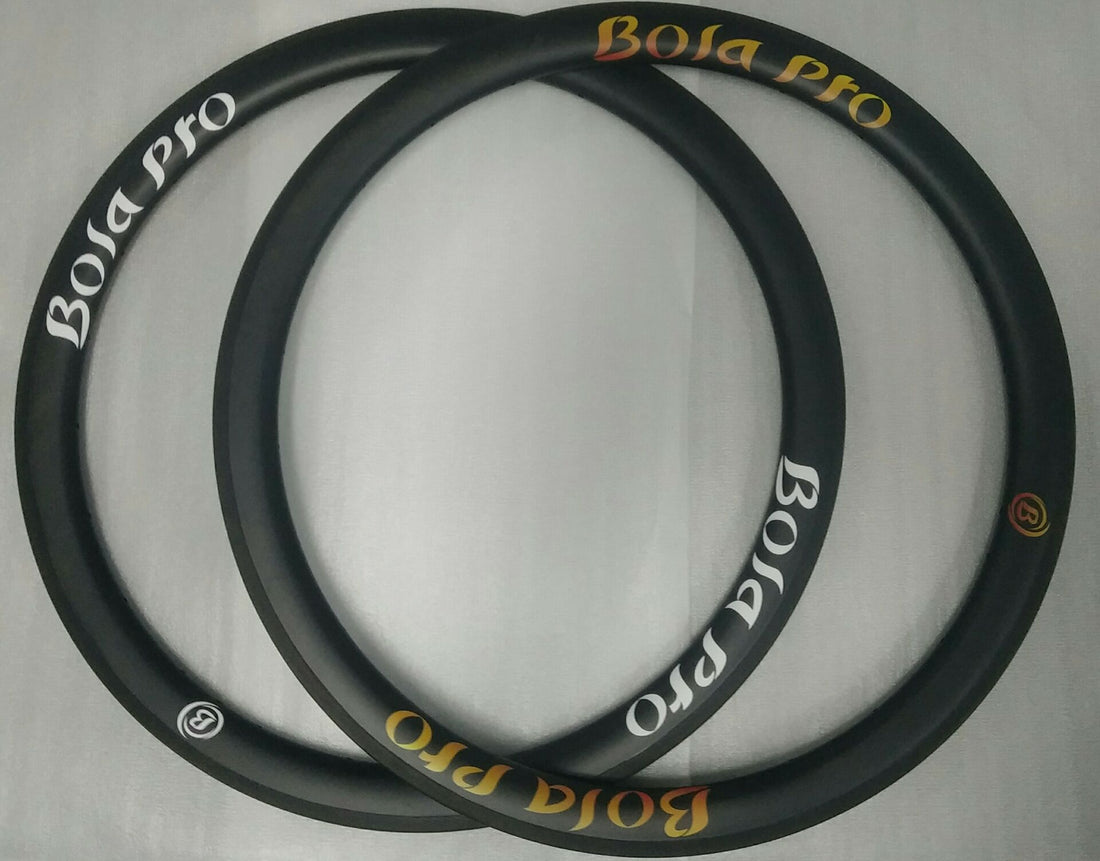
how to choose Carbon Rim?
Choosing the right carbon rim for your bike can greatly improve your riding experience. With a wide range of options available, it can be overwhelming to choose the right one. In this guide, we will discuss the key factors to consider when selecting a carbon rim for your bike.

1. Type of riding:
The first and most important factor to consider is the type of riding you do. Carbon rims are designed for specific styles of riding such as road racing, mountain biking and cyclocross. Each type of riding has its own specific requirements, so it is important to choose a carbon rim that is suitable for the type of riding you do.
2. Rim depth:
The depth of a carbon rim has a significant impact on its performance. Rim depth refers to the height of the rim from its lowest point to the top edge. A deeper rim can improve aerodynamics and provide better handling in windy conditions, but it can also add weight to the bike. For road racing, a shallow rim of 35mm to 45mm is suitable, while for mountain biking, a rim depth of 26mm to 30mm is more appropriate.
3. Rim width:
Rim width plays a crucial role in determining the tire size that can be used with the carbon rim. Wider rims provide better lateral stability and increased traction, while narrower rims are ideal for racing and reducing overall weight. The recommended width for road racing is between 21mm to 26mm, while for mountain biking, a width of 25mm to 30mm is suitable.
4. Tubeless or clincher:
Another important decision to make is choosing between a tubeless or clincher rim. Tubeless rims have become increasingly popular as they offer better puncture resistance, lower rolling resistance and allows you to run lower tire pressures for better traction. However, they are more expensive than clincher rims and require special sealant and valves.
5. Braking surface:
Traditional carbon rims were known for their poor braking performance, but with advancements in technology, this has greatly improved. If you ride in wet and hilly conditions, it is important to choose a carbon rim with an advanced braking surface such as a textured surface or a resin-infused brake track for better brake modulation and durability.
6. Rim weight:
Another important consideration is the weight of the rim. Carbon rims are known for being lightweight, but the weight can vary depending on the type of riding. For road racing, a lighter rim will improve acceleration and climbing, while for mountain biking, a slightly heavier, more durable rim is better for handling rough terrain.
7. Brand and price:
The brand of the carbon rim can also play a role in your decision. Some brands are known for their quality and durability, while others may offer more affordable options. It is important to do some research and read reviews to ensure you are getting a high-quality carbon rim for your budget.
choosing the right carbon rim for your bike takes careful consideration of your riding style, rim depth and width, type of surface and budget. It is always recommended to consult with a bike mechanic or do thorough research before making a purchase to ensure you get the best carbon rim for your specific needs. Remember, a high-quality carbon rim can greatly enhance your riding experience, so choose wisely.

"Get ready to leave your competition in the dust and leave a lasting impression with our Carbon Rim range. Meticulously designed and tested by our team of engineers, these rims are the pinnacle of performance and style. Not only do they offer a significant weight savings compared to traditional rims, but they also feature a sleek, eye-catching design to elevate your bike's appearance. Upgrade to our Carbon Rims and experience the ultimate combination of speed, agility, and aesthetics."
2.Are carbon rims more expensive than other types of rims?
3.What are the benefits of using carbon rims?
4.Can carbon rims be repaired if damaged?
5.Are carbon rims suitable for heavy riders?
6.How should I store my carbon rims when not in use?
7.Are carbon rims suitable for racing?
1.How long can I expect carbon rims to last?
The lifespan of carbon rims can vary depending on usage and maintenance. With proper care and regular inspection, they can last for several years. However, it is recommended to replace carbon rims after five years to ensure safety.
2.Are carbon rims more expensive than other types of rims?
Yes, carbon rims tend to be more expensive than aluminum or steel rims due to the production process and materials used. However, they offer superior performance and durability, making them a worthwhile investment for serious cyclists.

3.What are the benefits of using carbon rims?
Carbon rims offer several benefits, including reduced weight, increased stiffness, and enhanced aerodynamics. They also provide a smoother and more responsive ride, with improved handling and braking capabilities.
4.Can carbon rims be repaired if damaged?
In most cases, carbon rims cannot be repaired if they are severely damaged. The carbon fibers are woven in a specific pattern, making it challenging to repair without compromising the rim's structural integrity. It is best to replace a damaged carbon rim.
5.Are carbon rims suitable for heavy riders?
Yes, carbon rims can accommodate heavier riders, as long as the weight limit is not exceeded. It is essential to check the weight limit of the rims and adjust tire pressure accordingly for optimal performance.
6.How should I store my carbon rims when not in use?
It is important to store carbon rims in a cool, dry place away from direct sunlight. Avoid hanging them or placing heavy objects on top of them, as this can cause damage to the rims.

7.Are carbon rims suitable for racing?
Yes, carbon rims are a popular choice for racing due to their lightweight and aerodynamic properties, which can provide a competitive edge. However, it is essential to choose rims specifically designed for racing and ensure they meet race regulations.